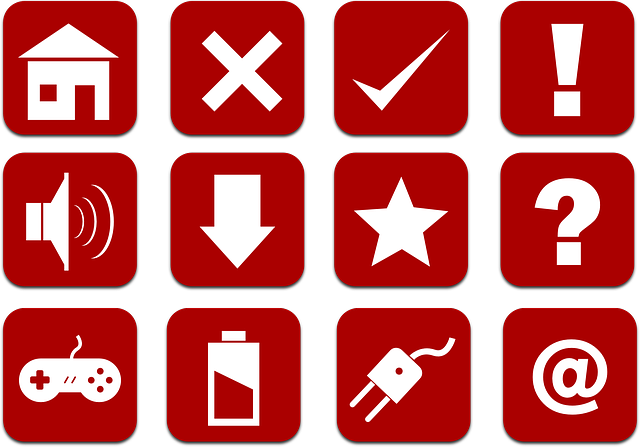When laptop batteries begin to hold less charge or stop holding charge altogether, it’s time to consider a replacement. This article outlines seven critical steps for safely replacing your laptop’s battery, ensuring you maintain device functionality and safeguard against potential hazards. We’ll guide you through assessing your battery’s health, the necessary safety precautions, a detailed step-by-step replacement process, and post-replacement care to optimize your laptop’s performance and longevity. Let’s navigate these steps together for a successful replace battery endeavor.
- Understanding Your Laptop's Battery Health and When to Replace It
- Safety Precautions Before Attempting a DIY Laptop Battery Replacement
- Step-by-Step Guide for Safely Replacing a Laptop Battery
- Post-Replacement Care: Maximizing the Life of Your New Laptop Battery and Ensuring Safety
Understanding Your Laptop's Battery Health and When to Replace It

Regular laptop operation depends heavily on the health of its battery. Over time, batteries degrade, leading to reduced performance and capacity. To ensure optimal device functionality and extend your laptop’s lifespan, it’s crucial to monitor your battery’s condition. This involves understanding how battery health metrics like charge cycles, maximum capacity, and voltage levels indicate the need for a replace battery. Most modern laptops come equipped with built-in tools that provide insights into these metrics. These diagnostic features allow users to check the battery’s overall health, which is typically expressed as a percentage of its original capacity.
A battery is generally considered to be at an optimal level when it retains at least 80% of its initial charge. A gradual decline in this figure can signify it’s approaching the end of its serviceable life. It’s advisable to replace the battery if it consistently holds less than 80% of a full charge, or if it requires charging more frequently, holds a charge for shorter periods, or if you experience unexpected shutdowns due to low power. Additionally, persistent bulging or swelling of the battery casing is a clear indicator that the battery poses a safety risk and should be replaced immediately. Regularly updating your system’s software can also help in maintaining battery health, as these updates often include improvements for battery longevity and performance. Always follow manufacturer guidelines and consult with professionals when necessary to ensure safe and effective battery replacement.
Safety Precautions Before Attempting a DIY Laptop Battery Replacement

When planning to replace the battery in your laptop, safety should be your top priority. Improper handling of the battery or components can lead to dangerous situations, including electric shocks or fires. Before proceeding with a DIY replacement, ensure that you have a clear understanding of the process by referring to detailed guides or instructional videos. This preparation is crucial as it minimizes the risk of errors that could compromise your safety or the integrity of your laptop. Always use the correct protective equipment, such as an anti-static wrist strap, and work in a well-ventilated area to prevent the buildup of hazardous gases from damaged battery cells.
Moreover, discharge the battery completely before attempting any repair work. This step is essential to reduce the risk of electrical currents when you open the laptop. Additionally, inspect the battery for any visible signs of damage or swelling. If present, these can be indicative of a compromised battery and should prompt you to replace it immediately. Keep all tools and spare parts organized and away from children and pets. Remember, patience is key; proceed with caution and at a measured pace to avoid accidental contact with exposed electrical components. By adhering to these safety precautions, you can ensure a safer environment for replacing your laptop battery and reduce the likelihood of unintended consequences during the repair process.
Step-by-Step Guide for Safely Replacing a Laptop Battery

When the time comes to replace your laptop battery, it’s crucial to proceed with caution to avoid damage to your device or injury to yourself. Follow these step-by-step instructions to ensure a safe and effective battery replacement process. Begin by powering down your laptop completely and removing any connected peripherals. Disconnect the battery pack and discharge the remaining power by keeping the laptop running on AC power until it shuts off automatically. This step helps to reduce the risk of electrical shock when you open the laptop case.
Next, carefully open your laptop’s casing, adhering to the manufacturer’s guidelines. Locate the old battery and disconnect it from the motherboard with care, ensuring that you note how each cable is connected for proper reassembly later. With the battery now detached, you can safely remove and replace it. Ensure that the new battery is compatible with your laptop model; incorrect batteries can damage your device or cause safety issues. After installing the new battery, reverse the process: gently connect the cables, and then proceed to reassemble the laptop’s casing, making sure all screws are tightened appropriately. Once completed, power on the laptop to confirm that the new battery is functioning correctly. Always refer to your laptop’s user manual or a trusted repair guide for specific instructions tailored to your device’s model. By following these steps diligently, you can replace your laptop battery safely and maintain the integrity of your computer.
Post-Replacement Care: Maximizing the Life of Your New Laptop Battery and Ensuring Safety

When your laptop’s battery shows signs of aging, such as a reduced ability to hold a charge or an increase in charging time, it may be time for a replacement. After replacing the battery, maintaining optimal performance and ensuring safety are paramount. To maximize the life of your new laptop battery, start by calibrating it upon first use. This process allows the battery meter to accurately reflect the battery’s charge level. Regularly monitor the battery health through your laptop’s software utilities, and keep the system updated with the latest firmware, as this can improve battery efficiency.
To further extend your laptop’s battery life, manage its usage intelligently. Avoid charging your battery to 100% routinely as this can accelerate battery degradation. Instead, aim to keep it between 40% and 80%. Additionally, operating under optimal temperatures and away from direct sunlight or excessive heat sources will prevent the battery from overheating, which can damage its cells. By adopting these practices, you can ensure that your laptop’s new battery not only lasts longer but also operates safely throughout its lifecycle.
When faced with a laptop battery that’s no longer holding its charge, following the 7 Steps for Safe Laptop Power Replacement as outlined in this article can empower you to handle the task without compromising your safety or your device. By thoroughly understanding your laptop’s battery health and recognizing the optimal timing for replacement, you can proceed with confidence. The safety precautions detailed ensure that you approach the process correctly, mitigating risks associated with DIY battery maintenance. With the step-by-step guide as your roadmap, replacing your laptop battery becomes a manageable task, allowing you to extend your laptop’s operational life. Post-replacement care is equally crucial for maintaining the longevity and safety of your new battery. Remember, when it comes time to replace your laptop battery, doing so with precision and care is key, ensuring that you can continue to rely on your device for all your computing needs without concern for power issues.
